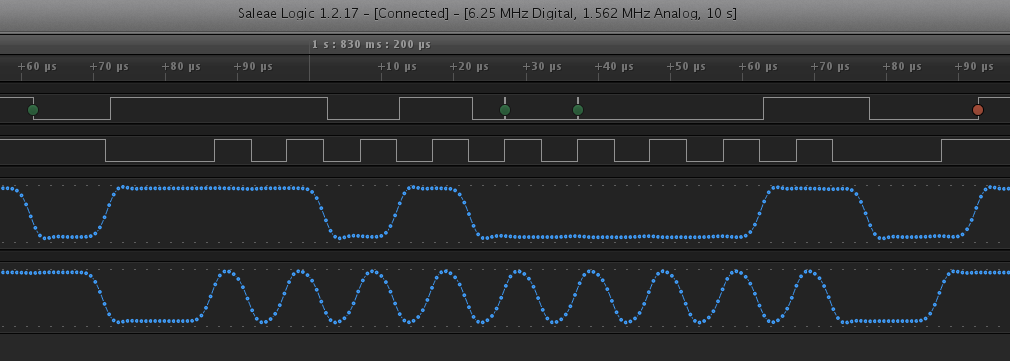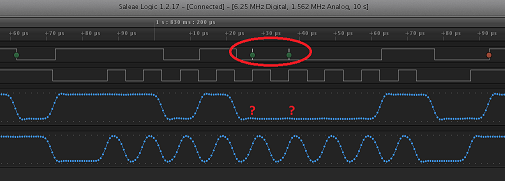Hi,
I'm connecting two I2C modules : MAX30102 and MPU-9250
I can individually communicate with either of these modules and they work okay. But if I connect both of them together on the same bus, only the MAX30102 works. The other module fails to communicate. I see the following on the Logic Analyzer:

I flashed again, and I get a different behaviour:

There is a small pulse in the SCL line towards the end. If I reset the board, I get a mix of ACKs and NACKs for write to different registers, but no consistent communication:

The MAX30102 module has an inbuilt level shifter, and it pulls the I2C bus to VIN, which is 2.8v coming from the NRF52-DK. But MPU9250 module did not come with a schematic, but I'm assuming it to be pulled up to 2.8V itself, since its VIN is the same 2.8V from NRF52-DK.
If I disconnect SDA/SCL of MAX30102, then MPU9250 start communicating consistently. Could anyone point out why the communication is inconsistent ?




